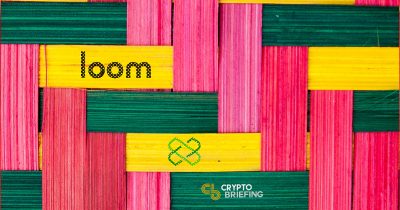What Is Loom Network? Introduction to LOOM Token

Share this article
What Is Loom Network?
The Loom Network is an Ethereum-based, Platform-as-a-Service (PaaS) network with a Software Development Kit (SDK) targeting large-scale, decentralized social app and game development. Loom DAppChains are run as parallel sidechains attached to smart contracts on the Ethereum mainnet. The LOOM token is the proprietary ERC-20 membership token that provides access to DAppChains on the Loom Network.
Video games are frontrunners in the race to implement cryptocurrency and blockchain into existing technology platforms. The $80 billion gaming industry is attracting a lot of crypto startups and users, with crypto collectibles and games among the top dApps running on Ethereum’s network.
Decentraland (MANA) provides a VR-based world on Ethereum with similar goals. As you would imagine in gaming, the competition is fierce.
Social media is keeping pace with its 4+ billion users, and cryptos like Steem (STEEM), Reddcoin (RDD), and even Dogecoin (DOGE) are filling every possible gap.
Catering to these massive sectors can pay off in a big way, and developers are joining the ship. CryptoZombies, Zombie Battleground, What is Blockchain, EthFiddle, EthDeploy, SolidityX, and DelegateCall are already running on the Loom Network. It’s also Plasma-compatible.
The Loom Network team is over 50 people, and its development looks strong. But that’s not all it takes to survive in the video games and social media.
Let’s start our dissection of co-founders James Martin Duffy, Luke Zhang, and Matthew Campbell’s Loom Network by researching LOOM, the ERC-20 cryptocurrency token used by the platform.
LOOM Cryptocurrency Summary
There is a total supply of 1,000,000,000 LOOM. The peak price of LOOM so far was $0.774454 on May 3, 2018.
The Loom Network was privately funded as part of Techstars NY. The company holds 35 percent of the total supply in a reserve fund, 10 percent is held by team members and advisors, and 55 percent was sold during the private sale in January 2018, raising over $25 million.
It’s necessary to hold at least 1 LOOM in order to participate on the Loom Network. DAppChain asset transfers check your LOOM balance before performing any transactions, but it doesn’t necessarily cost a LOOM token as a fee. You just need to stake it for platform membership.
It’s not possible to mine LOOM, but it can be earned through dApps. Developers can also issue their own tokens with a variety of mining options.
LOOM tokens are accepted on a variety of cryptocurrency exchange markets, including Binance, Bithumb, Bilaxy, Coineal, Upbit, Hotbit, Bittrex, and CoinBene. Over $500,000 worth of LOOM is traded on a daily basis. Trading pairs are typically BTC and ETH.
As an ERC-20 token on the Ethereum blockchain, LOOM can be stored on any ERC20-compatible cryptocurrency wallet, including MyEtherWallet and the Ledger and Trezor hardware wallets.
Looming Possibilities on the Horizon
Ethereum was the front-runner in blockchain development, building a smart-contract platform that could host and support development of decentralized applications. When Crypto Kitties and other dApps froze the network, it became clear scalability solutions were needed.
Loom Network is just one of the solutions to relieve Ethereum congestion, along with Plasma and Sharding. It positions itself as EOS on Ethereum, and like these other blockchain 3.0 solutions, Loom Network fixes congestion and scalability issues using sidechain support and interoperability. Think of it like the old-school analog looms used to weave carpets and blankets in older times.
The Loom SDK supports the Ethereum Virtual Machine, and sidechains can be built with any consensus mechanism and ruleset. Karma, tipping, non-fungible tokens, and other blockchain-based standards are supported too.
While the company says it’s focused on social and gaming, the dApps already on the Loom ecosystem cover a lot of ground. Here are the dApps already developed on the Loom Network:
- DelegateCall – A Stack Overflow with tipping, the website rewards users for posting and answering questions about blockchain programming.
- SolidityX – This superset makes Solidity easier for developers to implement and deploy.
- CryptoZombies – Create your own collectible blockchain-based collectible using CryptoZombies Origins: What is Blockchain, then battle your CryptoZombies in the Zombie Battleground.
- EthDeploy – A blockchain-based analogue to Amazon Web Services (AWS) platform to test and deploy commercial-scale dApps.
- EthFiddle – Over 10,000 users share snippets of Solidity code for public testing, compiling, and usage.
Both Loom Network and dApps running on it are independent platforms that are able to interact with each other and the Ethereum mainnet. Transferring value between any of these networks requires at least 1 LOOM to be staked in a connected wallet.
Loom Network’s digital ledger tracks the history of each LOOM coin, and selling your staked coin could compromise your saved game and dApp data. Be sure to carefully read through all Loom Network and individual dApp documentation before transferring staked balances out of your wallet.
Summary
The Loom Network is an Ethereum-based sidechain platform focused on social media and gaming dApps. It aims to relieve congestion issues on Ethereum using offchain development and interoperability. The success of the Loom Network depends on these key factors:
- LOOM, the native ERC-20 cryptocurrency token of the Loom Network, is a membership token that’s staked for access to Loom Network dApps. Proprietary tokens can be created on sidechains.
- Dapps on the Loom Network are called DAppChains and run on their own independent blockchains. Any consensus, rules, and other details can be customized per chain.
- A handful of projects are already developed on Loom Network, and it’s expected to continue growing its ecosystem moving through 2020.
With these pieces in place, Loom Network stands as a valid blockchain network to test and deploy Solidity and Ethereum-based blockchain projects. Many of its projects have userbases, and the team is active on social media.
If they can keep the momentum going, Loom Network will be a project to watch in 2020.
Share this article
